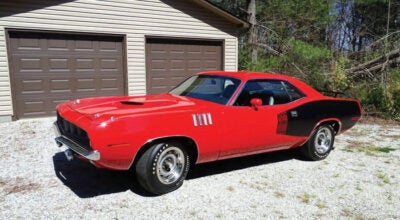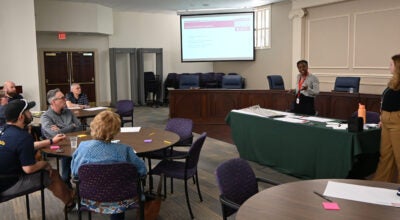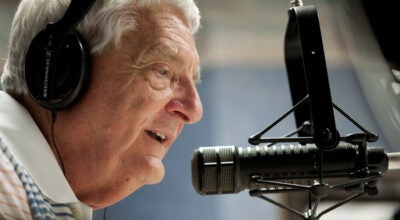VA hospital keeps patients moving with kinesiotherapy
Published 12:00 am Friday, September 13, 2013
SALISBURY — When Richard McDonald was 18 years old, he, like many others, never thought about the aches and pains he might have in his body as he grew older. But after several life changing events, he’s now dealing with the effects they have had on his body — and he is facing them head on.
“My injuries are a result from when I was 18 and I joined the Army — I jumped out of helicopters every day and every night. I was invincible; being so young I didn’t think it would hurt my back. It started up a few years later,” he said. “Then a few years ago, I ride Harleys, a lady pulled right out in front of me and I slid 87 feet. I had to get steel in my knee and I hurt my back again.”
McDonald has been a patient in the Kinesiotherapy Department of the W.G. (Bill) Hefner VA Medical Center since 2009. He said his time in therapy has greatly improved his quality of life.
“Being in here just keeps me going. I hit every machine I can hit, I do a good routine three days a week, I come in and work on exercises for my back and my knee,” he said. “I’m also a diabetic, have high blood pressure, cholesterol — this program keeps them in check. I feel better, I can maneuver better, I get up in the morning with a better feeling about how the day is going to go.”
Kinesiotherapy got its start in the VA by a physical therapist in 1957, according to Gary Whitaker, kinesiotherapy supervisor in Rehabilitation Medicine Service.
“They asked her to help some of the veterans who were coming back from World War II to get back out in the community.
“There weren’t enough PTs to do it, so she took physical educators, gave them 500 hours of clinical internship time, and showed them how to rehab the veterans. That’s where we got our start,” he explained.
Kinesiotherapy is a therapy that works side by side with physical therapy, but they are two different tracks to healing.
“We show them exercises to get them back to a healthier condition, whereas PT has more modalities to get them back to healthy. Modalities are ultrasound, artificial stimulation, traction,” said Whitaker. “We do our therapy mainly through exercise.
“We prescribe exercises and we treat the entire person — from the mental to the physical aspect of things.”
“The staff in KT has helped me more than any other doctor here,” said McDonald. “They’re always there for me and they know how much that means to me.”
Kinesiotherapists at Salisbury VAMC provide a wide variety of services including adaptive driver education, geriatric rehabilitation, evaluation of home accessibility, outpatient/employee fitness program, prosthetic/orthotic rehabilitation, ambulation training and fall prevention and recovery.
The American Kinesiotherapy Association defines kinesiotherapy as “the application of scientifically based exercise principles adapted to enhance the strength, endurance, and mobility of individuals with functional limitations or those requiring extended physical conditioning.
A registered kinesiotherapist can administer treatment only upon receipt of a prescription from qualified physicians, nurse practitioners and/or physician’s assistants who have been privileged to make such referrals.”
For more information, visit: http://akta.org/





